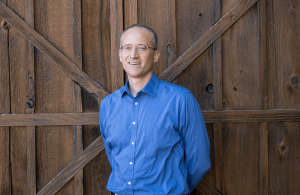
Original Nakedness: Seeing as God Sees
December 13, 2022

I began several months ago to explore the three “original experiences” Pope St. John Paul II pondered in his Theology of the Body. In these reflections, we have seen that the original experiences reveal fundamental truths about who we are as human persons (identity) and how we are called to live (vocation). Through original solitude, we discovered that we alone in the visible world are embodied persons, capable of self-awareness and self-determination, existing in a unique relationship with God as his sons and daughters, and are called to freely partner with Him in His divine plan. Through original unity, we reflected on how our bodies reveal that we are created male and female in the one human nature. This difference of sex affects the whole person and capacitates us to form a communion of persons through total, embodied self-giving. The “place” that God designed for this total self-giving is called marriage, which is a lifelong union of a man and a woman. Through their mutual self-gift, the love of the spouses can become personified through the child born of their union. Thus, the communion of the family forms an icon of the Divine Communion of Persons we call the Blessed Trinity.

There remains one final original experience to ponder: original nakedness. Pope St. John Paul II used this term in reference to Genesis 2:25: “The man and his wife were both naked, and were not ashamed.” This verse links together the absence of shame and the freedom the man and woman enjoyed in regard to one another and even to God. Shame is a powerful emotion that arises when we feel especially vulnerable and exposed in the presence of another. It is linked with a sense of fear of being used, abused, judged, or rejected by the other. It gives rise to an urge to hide or conceal ourselves physically or psychologically. In this way, shame cuts us off from others, but it also serves to preserve and protect our dignity in the face of real or perceived threats.

The Holy Father emphasized that the absence of shame experienced by our first parents does not so much indicate some lack but actually reflects a fullness. Due to the absence of original sin and the abundance of grace bestowed upon them, our first parents possessed a fuller capacity to see the world and one another as God intended. For them, the body perfectly revealed the person. Rather than merely seeing the exterior (e.g., the feminine or masculine features of the body), they beheld the spiritual reality and dignity of the person made in God’s image shining through the body. This inner vision of the person, which they possessed, naturally gives rise to a sense of awe, reverence, and non-possessive love. It also creates the conditions for man and woman to fully share themselves with each other without any threat of being reduced to a mere object to be used. Thus, the absence of shame and the corresponding fullness of vision leads to a greater capacity for true intimacy — to see the other and be seen as we truly are.
This way of seeing clearly involves more than just the eyes. It involves the heart and requires a purity of intention and openness to seeing transcendent value inscribed by God in created things, especially the human body. As Pope St. John Paul II wrote,
“Seeing each other reciprocally, through the very mystery of creation, as it were, the man and the woman see each other still more fully and clearly than through the sense of sight itself, that is, through the eyes of the body. They see and know each other, in fact, with all the peace of the interior gaze, which creates precisely the fullness of the intimacy of persons” (TOB 13.1).

Reflecting on original nakedness reinforces the dignity of the person and shines light on the depth of intimacy we are created to experience. This can help us gradually re-orient our vision so that we can see each other as the divine gifts that we are. To this end, we will ponder these themes further next time.
Note: This article is part of a series of reflections on Pope St. John Paul II’s “Theology of the Body”.

Written by, Dr. Andrew Sodergren, M.T.S., Psy.D.,
Director of Ruah Woods Psychological Services
(Article originally published in The Catholic Telegraph, March 2022 Issue, the official magazine of the Archdiocese of Cincinnati)
Share